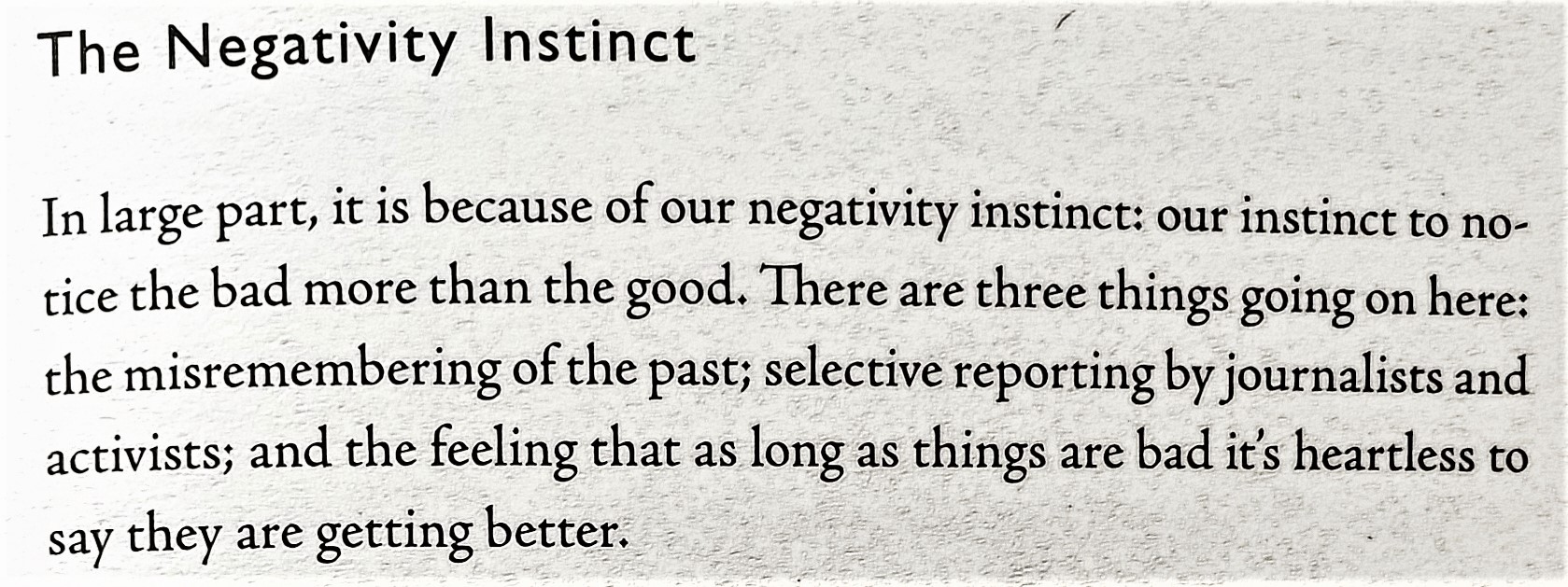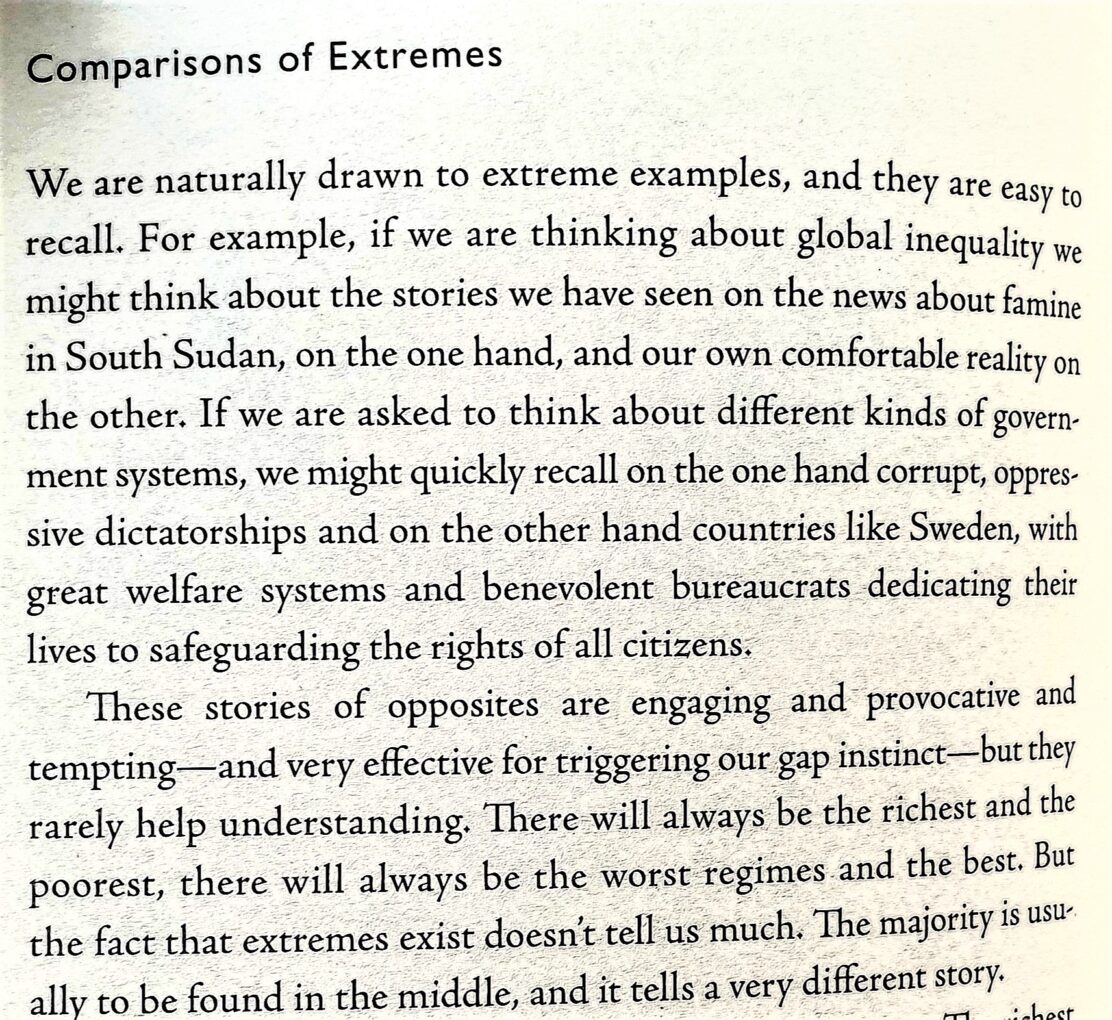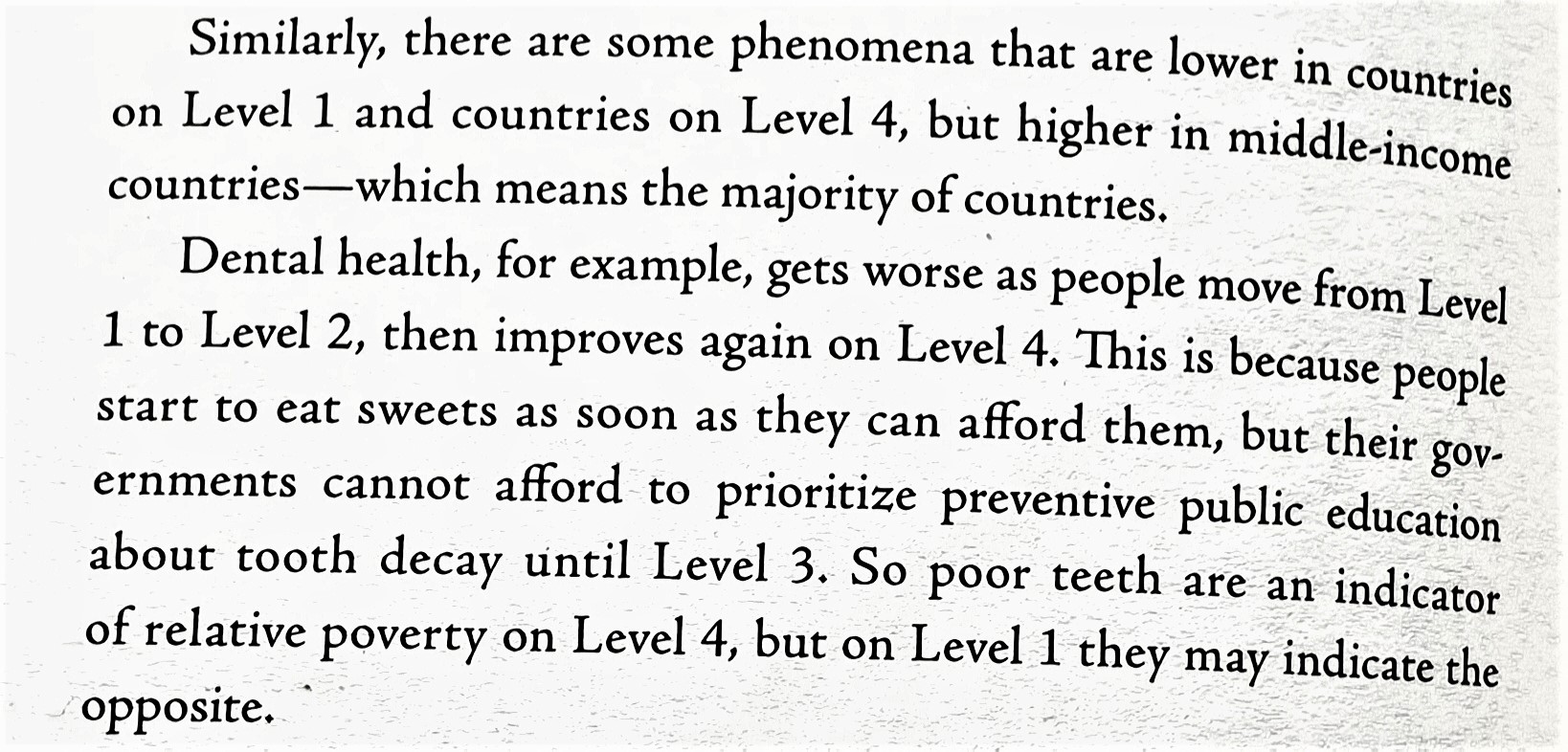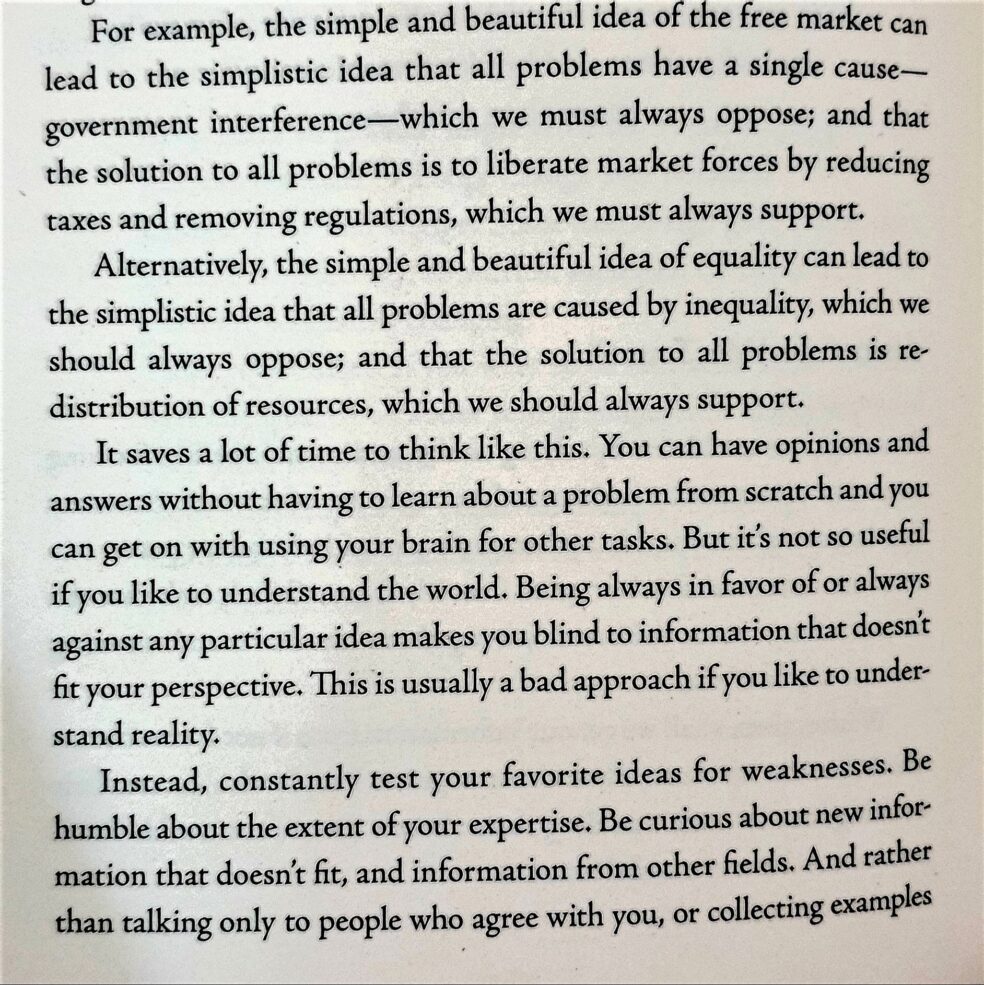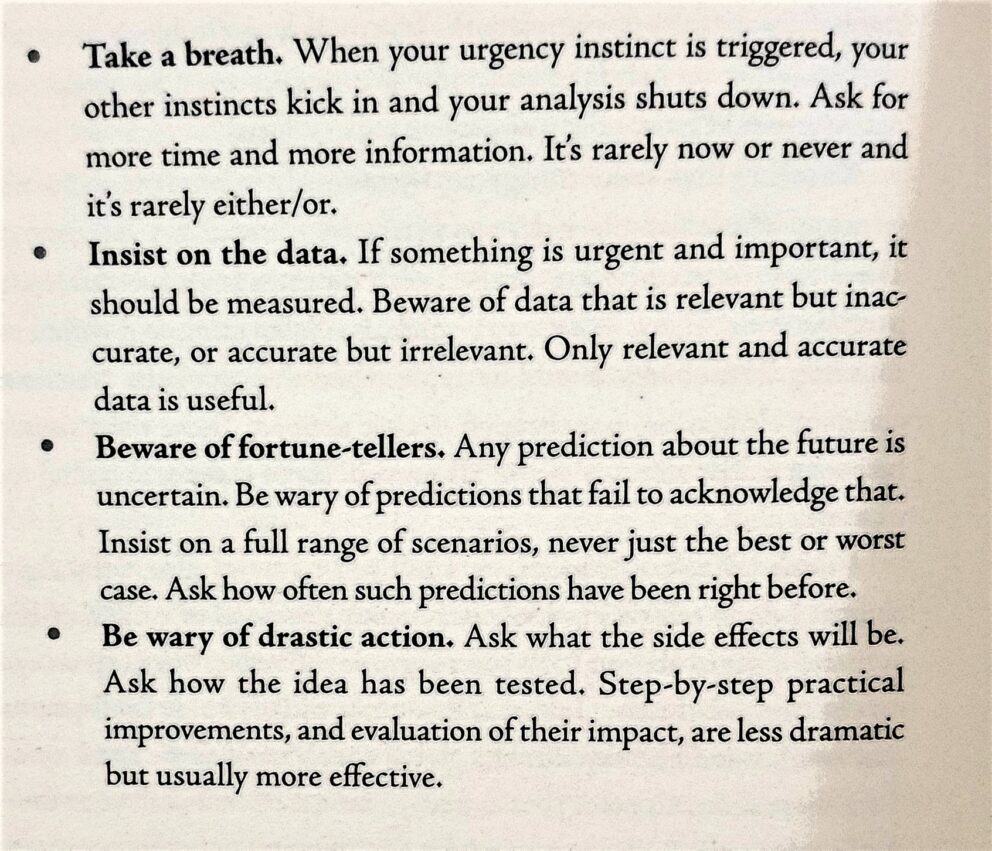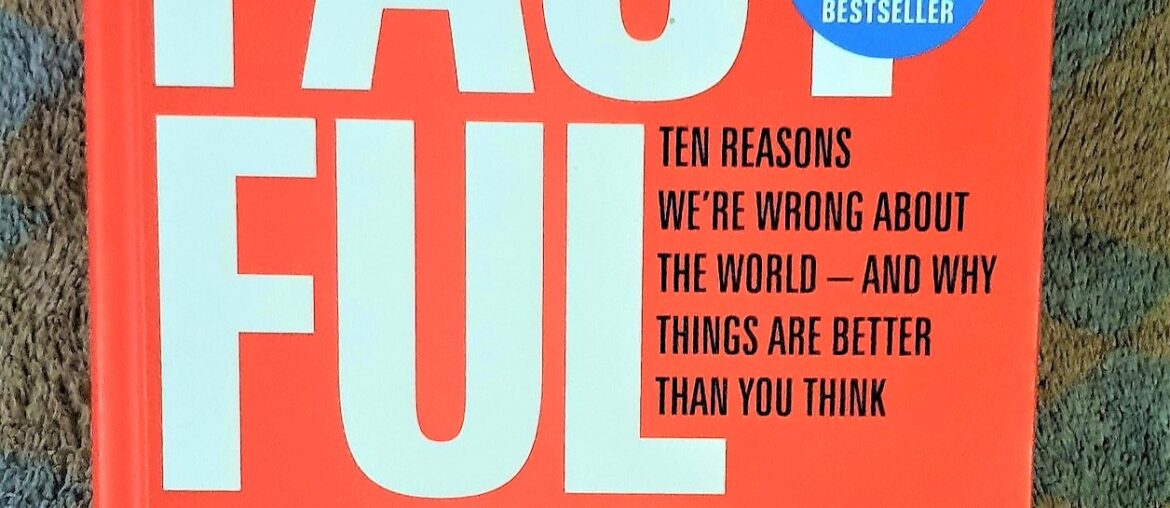The prevailing view around the world is that our world is an awful place and that it is getting worse each passing day. The premise of this book is that while the world is bad, that there is steady progress in almost every imaginable index. In summary, it is getting better. This is not a gut feeling or a pop-psychology feelgood premise but one anchored on readily available but often overlooked data.
If one overlooks the condescending cockiness that pervades the book, it actually delivers a concise toolkit with which to evaluate the world we live in. With the use of verifiable data, the author confirms that our view of the world is mostly conditioned by biases and instincts. Instincts like the gap instinct, single perspective instinct, blame instinct and urgency instinct. These instincts distort our world perspective. With incontrovertible proof, the book exposes our tendency to distort the state of the world by ignoring gaps and embracing extremes in data. With the use of clear, simple reasons to explain complex issues in the world we often create scapegoats, misjudge the size of things and assume straight-line trends. All of these instincts reassure us that the world is actually worse than it is. However, the statistics prove otherwise. While bad things are still happening, globally, the world is getting better. Some of the areas of surprising improvement highlighted in the book are girl education, extreme poverty, wars, effects of immigration and even child mortality.
There are lots of interesting anecdotes in the book. If you look beyond the cocky tone with which the author repeatedly highlights the ignorance of his survey respondents, the stories are quite educative and enlightening. This is a book that makes one less paranoid about the state of the world and does so with facts.
Good read.
3.4/5
